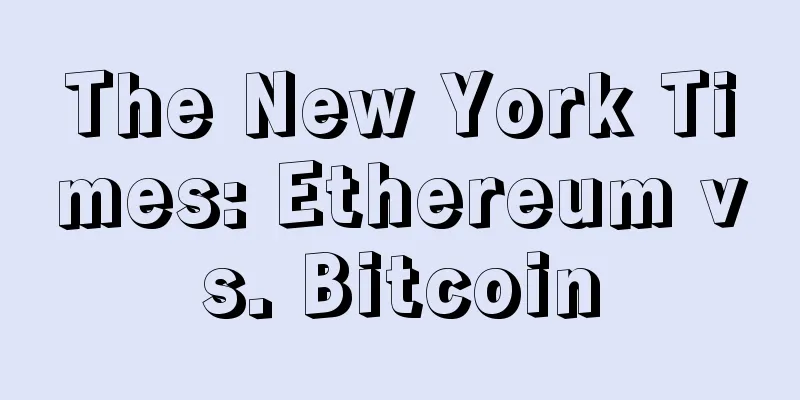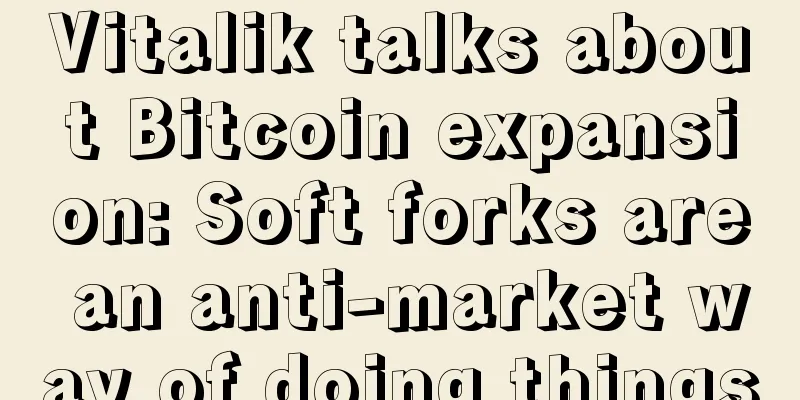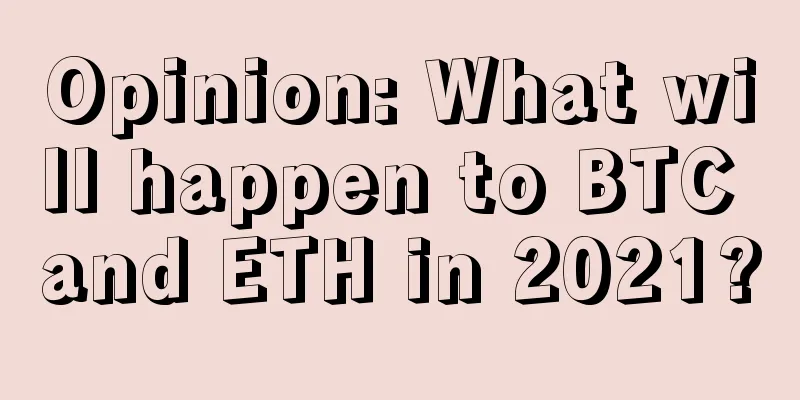The New York Times: Ethereum vs. Bitcoin

Translation: Annie Xu A new round of virtual currency gold rush is underway. While internationally controversial bitcoin has struggled, ether has surged 1,000% in value over the past three months. In addition to its rising value, Ethereum has attracted financial and technology giants such as JPMorgan Chase, Microsoft and IBM, who see Ethereum as the next Bitcoin 2.0 technology. The value of the relatively new virtual currency has been driven up by a debate within the bitcoin community over how the software should be upgraded. These internal disputes slowed down Bitcoin transactions, and companies began to look for other virtual currencies to replace Bitcoin. In this way, Ethereum took the lead. Like Bitcoin, the Ethereum system is built on a blockchain that stores transaction records. This system feature makes money and property transactions faster and cheaper, and does not require a bunch of middlemen to participate. It’s just that the characteristics of Ethereum can achieve more functions, so it attracts more people. In addition to being a virtual currency, this software also provides a way to build online markets and smart contracts. The Ethereum system is so complex that even those familiar with it cannot be clearly described in words. But an application under development can help suppliers trade directly with consumers and collect payment for goods. Ethereum already has dozens of functional applications, providing people with new ways to pay, gamble, and even Ponzi schemes. However, the system is still in its early stages of development, and the first full version of the Ethereum software has just been released, so it will face the same technical and legal issues as Bitcoin. Many Bitcoin supporters say Ethereum faces more security problems than Bitcoin because its software is too complex. So far, Ethereum has experienced fewer tests and more attacks than Bitcoin. Ethereum's novel design has attracted close government scrutiny because potentially fraudulent contracts such as Ponzi schemes could be written directly into the Ethereum system. But the system's advanced capabilities have attracted a group of corporate executives in the U.S. Last year, IBM said it was experimenting with using Ethereum to control physical objects in the Internet of Things. Microsoft is working on several projects to simplify Ethereum adoption on its Azure cloud computing platform. Marley Gray, Microsoft's head of corporate development and strategy, said:
Marley Gray works on blockchain, a technology designed to store transaction information and data without the involvement of a central authority or custodian. The blockchain ledger is maintained and updated by a group of computers, which is somewhat similar to the way Wikipedia data is updated and maintained. Many companies use private blockchains to build their own Ethereum networks, independent of the public system, which reduces the unit value of the Ethereum system. Its value is in the form of ether that people have recently bought and sold. The interest in Ethereum shows how businesses are fascinated by blockchain. Most of the big banks say they want to use it to increase the speed and efficiency of transactions and money transfers. On Tuesday, senior bank executives will hold a conference, "Blockchain: Exploring its true potential and cutting through the hype." Many banks have recently been studying how to use Ethereum. For example, JPMorgan Chase has developed a special tool called Masala that supports the interaction between its internal database and the Ethereum blockchain. Michael Novogratz, a former executive at private equity firm Fortress Investing Group who led Fortress’s bitcoin investments, has been studying Ethereum since leaving Fortress last fall. Michael Novogratz said he bought a significant amount of Ether in January and had heard about the debate in the financial industry about the shift to virtual currencies.
At the beginning of this year, the price of a unit of Ethereum soared from $1 to $12, and the total value of all Ethereum reached $1 billion, higher than all virtual currencies except Bitcoin; last week the total price of Bitcoin reached $6 billion. After the emergence of Bitcoin, many so-called altcoins have attempted to improve on it, but none of them has achieved more than Ethereum. Unlike bitcoin, which was launched in 2009 by the mysterious Satoshi Nakamoto, ethereum was created more transparently by Vitalik Buterin, a Russian-Canadian who dropped out of the University of Waterloo in Ontario. The basic goal of Ethereum is to write binding agreement programs, smart contracts, for the blockchain. For example, two people can add a sports betting program directly to the Ethereum blockchain. Once the score comes out from an authoritative source, such as the Associated Press, this currency will automatically become the winner. Ether can be used as the currency of this system and is also the means of payment required for the operation of the betting program. The Ethereum system is sometimes described as a shared computer operated by users, where resources are allocated and paid for in Ether. After the system was established, the team of seven co-founders helped Vitalik Buterin write software programs and raised $18 million through the pre-sale of Ethereum in 2014 to create the Ethereum Foundation dedicated to software development. Like Bitcoin, Ethereum's success has come from attracting a loyal following who help develop the software in anticipation of a surge in the price of ether when the system succeeds. Last week, the number of computers, or nodes, supporting the system reached 5,800 worldwide. The Bitcoin network has 7,400 nodes. Co-founder Joseph Lubin founded ConsenSys, a Brooklyn-based company that has hired more than 50 developers to build applications on the Ethereum system, including those that support music distribution and financial auditing. ConsenSys’ office is located in an old industrial building in Bushwick, Brooklyn. The office is actually a large room filled with a bunch of startup logos, including whiteboards on the wall and computer parts everywhere. Joseph Lubin said that he started investing in Ethereum after discovering that Ethereum could achieve functions that Bitcoin did not have, especially after Ethereum launched new online contracts and markets.
Joseph Bonneau, a computer science researcher at Stanford University who specializes in cryptocurrencies, said Ethereum was the first system to pique his interest after Bitcoin. But he also warned that everything is still unclear.
|
<<: Technical analysis of Bitcoin market - Want to buy Bitcoin?
>>: IEEE holds blockchain-related cloud computing conference at Oxford University
Recommend
What does a groove on a woman's chin mean?
Some women often have grooves on their chins, and...
Moles on the face
The face is the most visible part of our body. Wh...
What is the fortune of women with square faces?
1. Successful career In palmistry, if a person ha...
Do girls with the "川" shape on both hands have good marriages?
There is a folk saying: "A woman with a &quo...
The Linux Foundation’s blockchain project has grown to 30 member companies
The Linux Foundation-led distributed ledger initi...
What does a woman look like when she is rich and powerful?
Some women want to be rich and powerful. In fact,...
The face of a woman with an unhappy marriage and a pointed nose
Being able to have a perfect marriage is what eve...
Coin mining netizens Antminer mine photos activity display
The activity of sharing photos of Antminer mines ...
What is the relationship between the mole on the ring finger and marriage?
Is there any relationship between the mole on the...
Analysis of moles on men's eyebrows
Everyone has a few moles on their face, but the m...
Detailed explanation of the migration palace, where does the migration palace refer to in physiognomy and what is its significance
The migration palace in physiognomy is also calle...
Is it good or bad for people with a mole on their left breast?
1. Moles on the upper part In physiognomy, if a p...
The cold faces of people in life
Most people are always particularly polite when d...
How to tell a person's personality from his cheekbones
In physiognomy, we can judge a woman's person...
Is it good to have moles on your hands and feet?
Is it good to have moles on your hands and feet? ...









